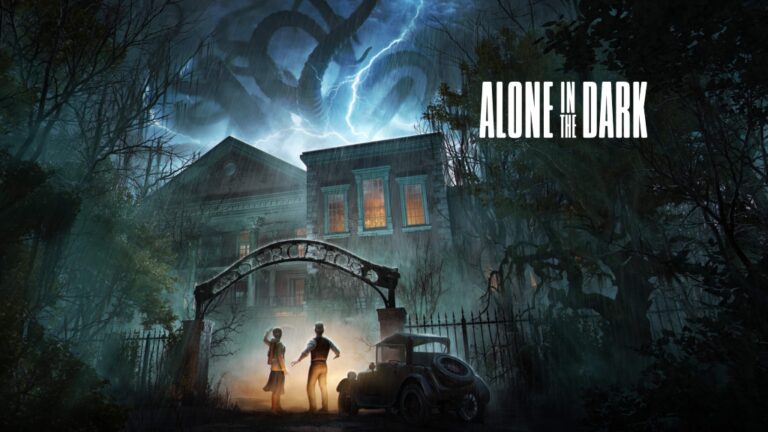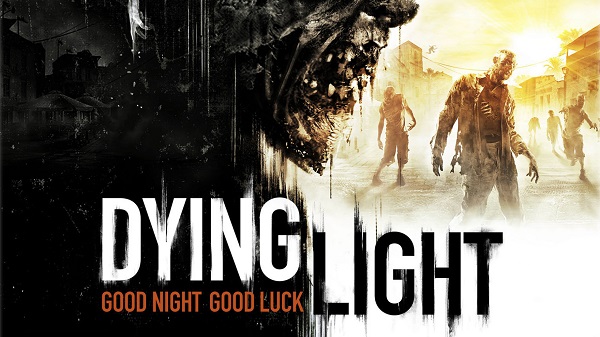
Dying Light, Techland’s newest romp through a zombie-infested world, has long been one to watch. It’s suffered multiple delays, had everyone worried when review codes were held back ’til the last minute, and had a troubled launch, but CJ and I thought it looked like it had potential at last E3. Despite these ominous digital clouds, Dying Light is worth your time if you like a shit ton of potatoes with your meat.
Here’s the basic idea: you play as Kyle Crane, a GRE (Global Relief Effort) hiree who is sent into Harran, a fictional Turkish city. Harran has been quarantined due to the viral infection that’s turning everyone into zombies, which are commonly referred to as “biters” in-game. Crane is given orders to pose as a survivor so that he can track down Kadir Suleiman (known as “Rais” in Harran) to retrieve a file that he stole from the GRE. The plot is completely predictable and you’ll know where it’s going at all times, so if you’re expecting any kind of narrative intrigue, look elsewhere. Oddly enough, the side quests actually feature the best writing in the game – more on that in a bit, though.
Dying Light borrows liberally from other games to create its own hybrid monstrosity: it features a villain that really wishes he was from Far Cry, features Diablo/Borderlands/Dead Island’s loot system, a more open version of Mirror’s Edge‘s parkour, and Fallout/Skyrim’s lockpicking. In fact, I would have completely believed someone had they told me this was a spin-off of Far Cry called Far Die, especially when you start climbing towers akin to Ubisoft’s favorite type of structure. Usually when you see a game that’s lifting mechanics from others it’s a reason to be concerned. Yet, the layer of familiarity in Dying Light makes it gaming’s equivalent of comfort food. The gameplay of the first hour or so is easy to sink into, but it isn’t much different from the next thirty hours.
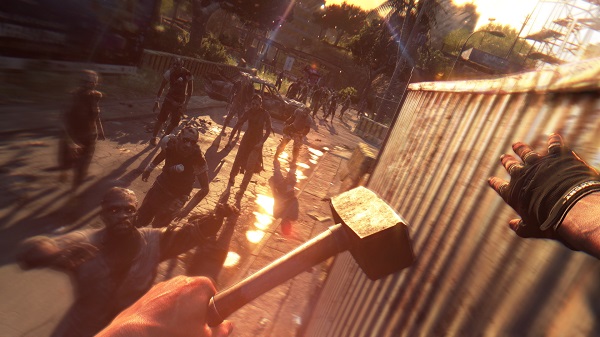
There are three experience pools for you to level up. Strength gives you your fighting prowess, Agility fuels your parkour abilities, and Survivor abilities tend to give you better crafting recipes. You level up your Strength and Agility by fighting and jumping around respectively, and the Survivor level is raised by doing missions and picking up the GRE’s airdrops for valuable supplies. The progression of all three classes are rewarding and unlike many of today’s games, basic abilities don’t feel blocked off by the upgrade system. You always feel like you’re growing and watching that experience bar ticking ever-upwards generally doesn’t feel like a grind until the last couple of levels, which I didn’t reach even upon 100%ing the game. By then, there’s not really a reason to finish your skill trees anyway.
Combat is a surprisingly tactile affair. Though the directional combat of Dead Island isn’t featured here, the sounds and feel of smashing zombie skulls in remains satisfying throughout. You start off with mundane items like pipes and wrenches but will eventually be cleaving zombies in twain with medieval swords. Fighting humans can be more satisfying due to its higher difficulty, but it does get frustrating when they use their Jack Burton reflexes to deflect 5 of your throwing stars in 5 seconds. I also find myself thinking that the violence should be less ridiculous when fighting humans. Zombies are decomposing and squishy so I can suspend disbelief and accept that it’d be easy to cut one in half, but when Crane slices a human vertically in half, I can’t help but roll my eyes at the sheer amount of strength that would require. And yes, I’m perfectly aware that I’m complaining about superhuman strength in a game with a supernatural storyline, but c’mon.
Just like Dead Island you can upgrade your weapons with silly attachments like batteries for electricity damage and lighters for fire damage. It’s a jolly ol’ time creating the perfect kitchen cleaver, though the more realistic tone of Dying Light seems at odds with the crafting system. There are weapon rarities like many loot-driven RPGs, with better colors like purple and orange having better damage, durability, and upgrade slots. I love that weapons now have a finite amount of repairs, as you can’t just find one weapon and stick with it for the entire game. By the time your favorite baseball bat can no longer be repaired, it’s probably time to find something new anyway. Guns are exciting when you first get them and are a necessity in some of the later human fights, but quickly lose their luster when you realize they can’t be upgraded like the melee weapons can. I found this odd as you can find different rarities of the same gun, but they’ll have the exact same stats so there’s no reason for the rarities. You later meet a gunsmith and there are mentions of silencers and upgrades, but this never comes to a fruition. I can’t help but think that maybe they had planned to let players upgrade their guns but it fell through at the last minute and didn’t clean up the evidence. There’s other evidence that plenty was left on the cutting room floor – when looking for screenshots on google I saw all sorts of characters and zombie models that I never saw in the game. Odd.
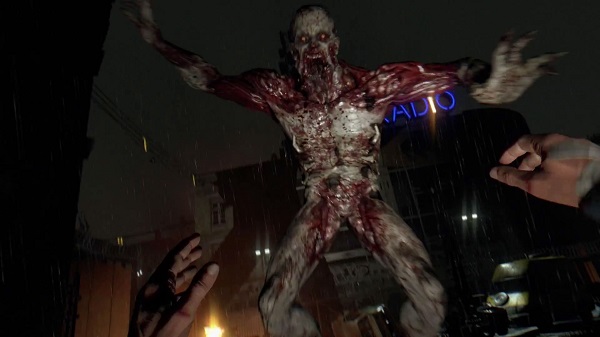
The two things that Dying Light achieves almost perfectly are its parkour/movement system, and its day/night cycle. Though you start off with very little stamina, a few hours into the game you”ll be soaring over shantytowns, crowded freeways, and cliffs like a low-flying eagle. Anything you can see, you can vault over, with very few exceptions. Though there are perhaps a few too many obvious ramps set up, the environments naturally lend themselves to a perfect parkour playground. What starts off as a chaotic, broken city to your untrained eye soon becomes a jungle gym with unlimited possibilities. By the time you unlock the grappling hook you’ll look forward to the many fetch quests if only because you’ll get to see how quickly you can zip over to the other side of the two maps. The second (and much more interesting) map features tall buildings that allow you to live out your Spider-Man fantasies. Though many of the reviews I’ve read have complained about the lack of fast travel, I never felt the option was necessary considering how smooth and rewarding the movement is. The only caveat is that you’ll occasionally notice a small disconnect from when you reach a ledge and when your hands actually grab onto it, but I stopped noticing that within my first hour.
The day/night cycle that gives Dying Light its name adds a delicious tension to the experience. During the day, you can fight zombies without much fear of death. You can be more daring, and you get more of a Dead Rising experience than anything. But during the night, the Volatiles come out. These advanced zombies can pounce from afar and destroy you in a matter of a few seconds. The game becomes more of a stealth game at night complete with soliton radar-esque vision cones for the Volatiles on your mini-map. I sort of wish those cones weren’t there so you couldn’t game the risks of night-time quite so easily. And believe me, you will, since you get double experience during the dark hours. While I love this risk-reward system, I think it would have been more effective if the challenge was a tad higher. Most of the game leans on the easy side of things, which is a shame since so many of Dying Light‘s mechanics could combine into a kickass survival horror.
In fact, there are multiple mechanics that, if stretched a little further, could have added enormously to the survival elements of the game. The previously mentioned air drops only give you experience, but since they’re supposed to contain life-saving supplies for your group of survivors, I can’t help but see it as a missed opportunity that the air drops aren’t tied to keeping your friends alive. Since you have to do fetch quest after fetch quest anyway, it would have been more involving if there were actual lives tied to Crane’s actions. Coupled with the time mechanic in the game this could have given it a much-need shot of urgency. After you get about halfway through the game, you’ll notice how static the world really is. Having some kind of effect on the people and environments around you would have raised the stakes.
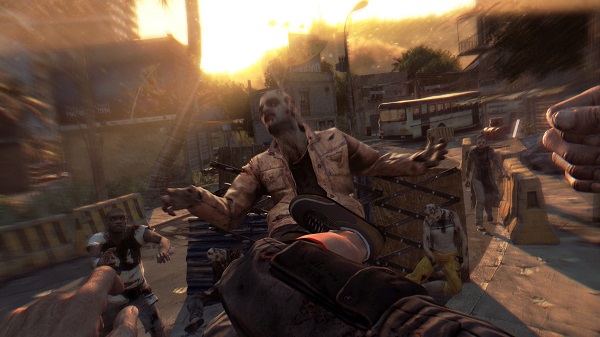
As for the main story, Dying Light largely ignores that most zombie films are a comment on the state of the human condition, and instead focuses on every cliché you’ve ever seen in zombie media. Surprise, the government is evil. Surprise, humans are the real monsters. Playing as an undercover agent also has the unfortunate effect of likening the game to one of those movies where a guy pretends to be someone he isn’t to get the girl. Within the first few minutes of the game you can already anticipate the “I was sent here to do something, but actually now I care about you guys” speech. Luckily, when it comes it’s not as cut-and-dry as that, but you’ll never be shocked at the outcome of anything in the campaign. It’s hard to bring yourself to care about any of the characters in the game with their wooden animations, flailing arms, and dead eyes. I have to give Roger Craig Smith (Crane’s voice actor) credit here, though. While his character isn’t anything revolutionary, he’s injected so much personality into it that it’s hard not to smile. He expresses fear when encountering new types of infected, annoyance at the fetch quests he’s constantly sent on, and a bit of sarcasm at some of the ridiculous challenges he faces. He has a certain authenticity that the other characters lack, and he’s one of my favorite parts of the game.
Perhaps the strangest thing about Dying Light is that the best moments in the story are relegated to the side missions. Though they start off slow and one is even a bit offensive (a mentally handicapped character actually references Flowers for Algernon– subtlety is not the game’s strong suit) the strange cast of characters you meet off the beaten path are what kept me pushing through the by-the-numbers story. Whether it’s the salesman who won’t let a little zombie outbreak deter him from becoming employee-of-the-month or a young man who wants you to help him cure him of his “lycanthropism,” these people make the campaign’s characters look all the more stereotypical. My personal favorite quest involved a gunsmith who was taking care of a kindergarten with his wife. Unable to tell the children what was happening outside, he donned a wizard’s hat and told the children that a bad wizard had made it scary outside. He has you (a knight) go get a health potion (insulin) for a diabetic girl, all to keep the illusion intact. Heartbreaking story beats like these are rare and make it feel like the side quests were made by a much better writer than the rest of the game. I hope she/he/they write Dying Light 2.
There’s also a kind-of great John Carpenter-esque synth soundtrack that gives the game much more character than I was expecting. I couldn’t help but think of the Man of Steel soundtrack a few times, because of one song in particular. BWUM BWUUUUM. You’ll hear what I mean if you play it. The score also weaves in some Eastern music in an interesting way. The sound effects are always satisfying in a crunchy way, too. Hearing the roar of a horde when you fire a weapon never fails to raise the hairs on my arms.
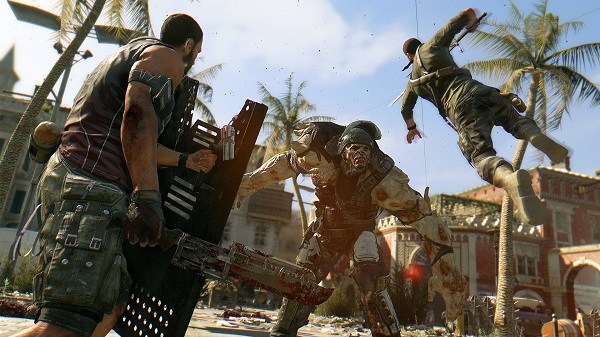
Also featured is a well-designed drop-in-drop-out co-op system that can be a ton of fun. While I preferred to go through the game solo, you also have the option of playing with up to three other friends. When I tested it out, there were no hiccups anytime me or my friends jumped into a game. It also keeps everyone’s progress separate so you can keep your own playthrough for yourself and still earn experience for playing. It is slightly hilarious that you all play Kyle Crane in different outfits, but hey, Assassin’s Creed Unity got away with it. I’ll probably jump back in to play with CJ and continue leveling up at some point in the future. The ‘Be the Zombie’ mode that was originally planned to be DLC but is now free for anyone is solid in concept (your game can be invaded by someone who becomes one of the Volatiles) but we had problems connecting almost every single time. This is bizarre considering how well the co-op works. It’s a bit of a shame since the sense of movement as the zombie feels great and I can see the mode being enjoyable. Perhaps a patch will mend this issue.
On the subject of patches, the PC version that I was playing had many issues when I first started playing including disappearing quest markers, unplayable framerates, and falling through the planet. The day-one patch helped with most of these problems, even though you’ll still notice technical jank here and there. My entire experience swung wildly from 20 FPS to 60 FPS. I do need to upgrade my CPU, but from what I’ve gathered even top-of-the-line PCs are having trouble. While day-one patches are increasingly common, the parkour would have been that much more enjoyable with a consistent framerate.
Dying Light harbors brilliant ideas wrapped up in the bloated, rotting corpse that is indicative of AAA focus-testing. When it highlights the quiet moments, the people who are reacting to a freshly-scarred world in the only ways they know how, it shines. When it tries to check off easily-marketed boxes, it’s easy to wish the extra skin would slough off. The bones are intact, and with a bit of focused necromancy, we could have a great series of games here. The ending is laughably open to a sequel, anyway.
 (7.5 / 10)
(7.5 / 10)
Good
 (7.5 / 10)
(7.5 / 10)
